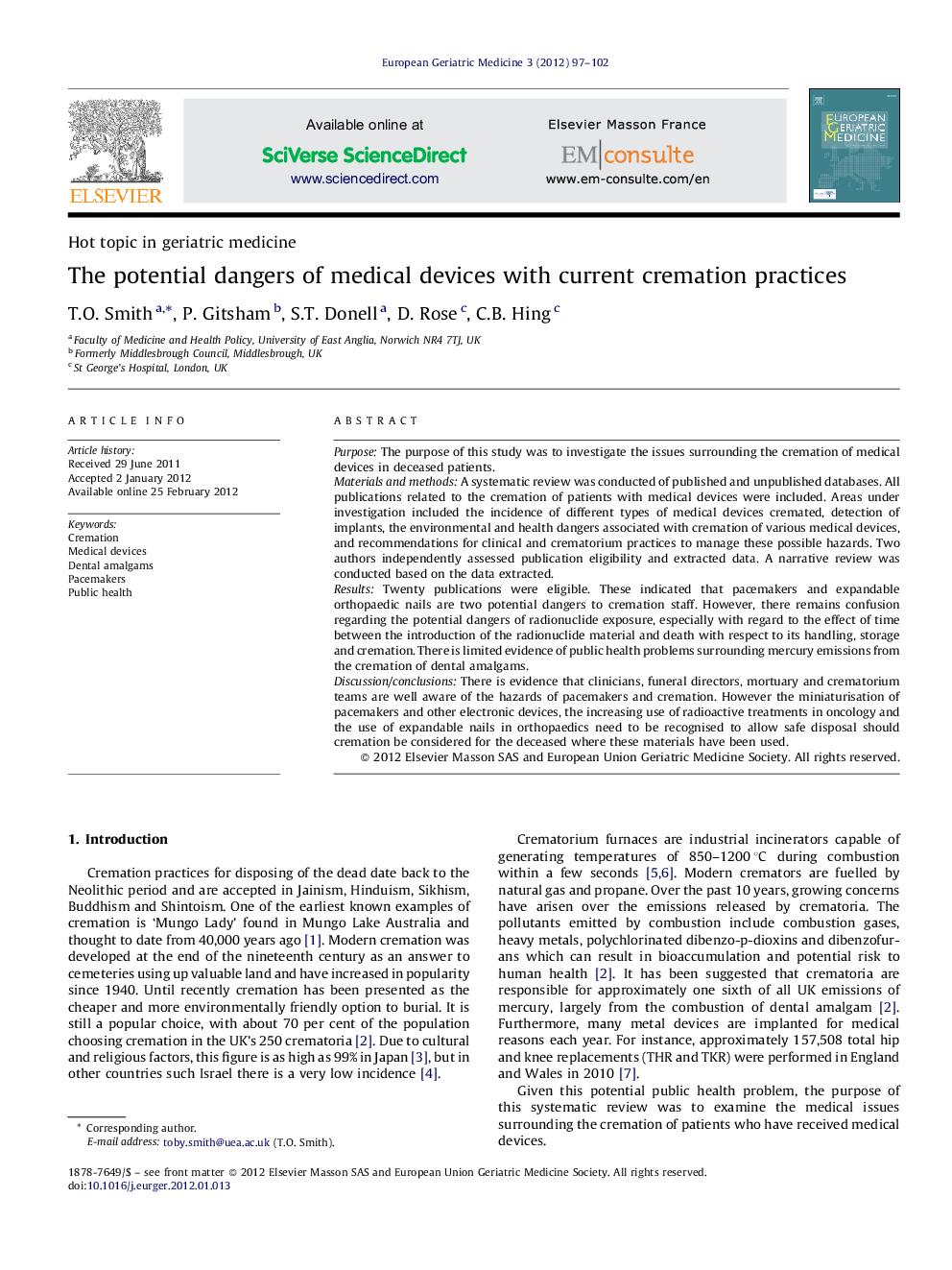| Article ID | Journal | Published Year | Pages | File Type |
|---|---|---|---|---|
| 3324556 | European Geriatric Medicine | 2012 | 6 Pages |
PurposeThe purpose of this study was to investigate the issues surrounding the cremation of medical devices in deceased patients.Materials and methodsA systematic review was conducted of published and unpublished databases. All publications related to the cremation of patients with medical devices were included. Areas under investigation included the incidence of different types of medical devices cremated, detection of implants, the environmental and health dangers associated with cremation of various medical devices, and recommendations for clinical and crematorium practices to manage these possible hazards. Two authors independently assessed publication eligibility and extracted data. A narrative review was conducted based on the data extracted.ResultsTwenty publications were eligible. These indicated that pacemakers and expandable orthopaedic nails are two potential dangers to cremation staff. However, there remains confusion regarding the potential dangers of radionuclide exposure, especially with regard to the effect of time between the introduction of the radionuclide material and death with respect to its handling, storage and cremation. There is limited evidence of public health problems surrounding mercury emissions from the cremation of dental amalgams.Discussion/conclusionsThere is evidence that clinicians, funeral directors, mortuary and crematorium teams are well aware of the hazards of pacemakers and cremation. However the miniaturisation of pacemakers and other electronic devices, the increasing use of radioactive treatments in oncology and the use of expandable nails in orthopaedics need to be recognised to allow safe disposal should cremation be considered for the deceased where these materials have been used.
